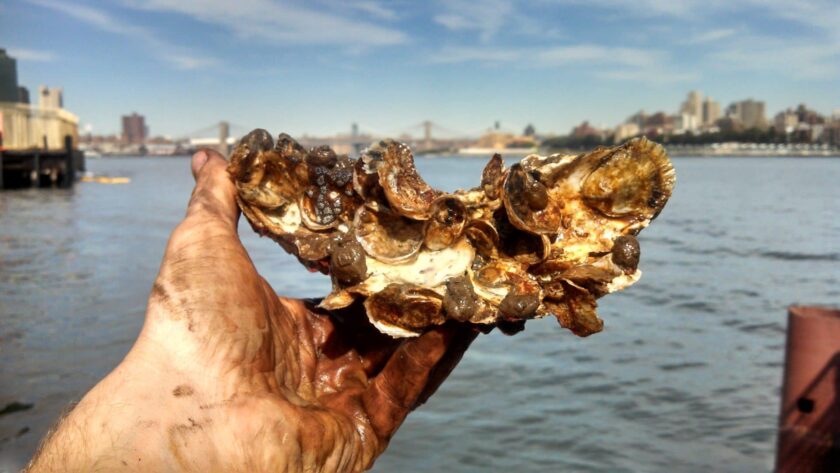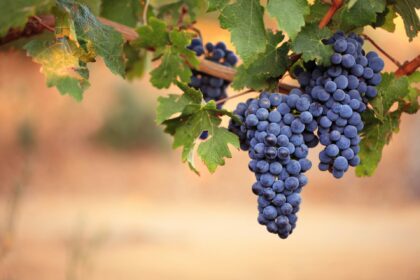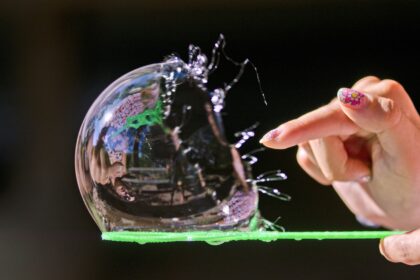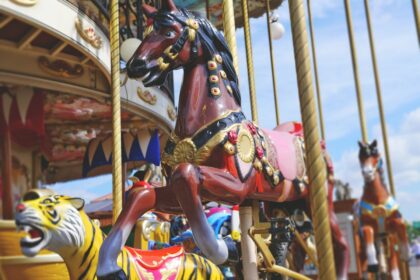
Did you know that New York Harbor was once home to hundreds of thousands of acres of oysters?
Better yet… do you know how many of these oysters were left in the late 19th century?
Oysters were long a key component of the ecosystem of New York Harbor, filtering the water and creating a marine habitat where other organisms thrived. But beginning with the arrival of Europeans, the oyster population was destroyed, first by mass consumption and then by water pollution.
There are no oysters living in New York Harbor today… or at least, there weren’t until Billion Oyster Project came along. Thanks to advancements after the Clean Water Act of 1972, the Billion Oyster Project is ready to bring oysters back to New York: one billion of them, to be precise.
The Project’s Beginnings
Pete Malinowski is one of the co-founders of the Billion Oyster Project, which he founded with Murray Fisher and launched publicly in spring 2014.
“The idea was to create the aquatic analog of Million Trees NYC,” Pete says, comparing his project to the semi-public initiative to plant 1 million trees in the city.
The idea started blossoming in 2003, a project that developed with New York’s Harbor School, at which Pete is an aquaculture teacher. The public school on Governors Island not only provides a traditional education for its students but also integrates the city’s maritime experience into its curriculum, providing training in careers on the water and sowing the seeds of what the school calls “environmental stewardship.”
When Pete first became involved with Harbor School in 2008, oysters had already been a part of the curriculum for five years. But he brought a new dimension to the project. “At that point we began growing our own oysters on Governors Island. That marked the transition from oyster gardening to oyster farming.”
But oysters are far from being the only organism that could be restored to the harbor this way.
“The idea with the oysters is that it is more bang for your buck,” Pete says. “Oysters create habitat and support many other organisms, so by restoring oysters you restore that ecosystem.” By focusing on growing a billion oysters in the harbor of one of the busiest cities in the world, then, Pete and his team hope to restore the entire underwater ecosystem of New York Harbor.

New York And The BOP: Living In Symbiosis
While Harbor School is the main school for whom the BOP is a major element of the curriculum, there are 36 participating schools can gain access to the curriculum and some equipment to care for their own oyster garden. The result of the project for curricula is far more expansive in scope than a simple science project or long-term field trip. Not only does the BOP create diversity in the curriculum, but it allows students a more first-degree approach to many of the concepts that other students will be learning out of textbooks.
“By developing authentic, place-based science and math lessons that meet core requirements that teachers are already tasked with teaching their students, we provide a valuable service for those teachers,” Pete says. “The oyster gardening and ecosystem restoration creates a narrative that provides context for math and science.”
And the benefits of participating in the BOP don’t stop after graduation. The knowledge gleaned from the program prepares students for careers in marine fields, from Marine Systems Technology to Ocean Engineering to Marine Biology. “Right now the people working in these fields, typically do not grow up in New York City,” Pete says. “We hope that by creating this system of training we will be producing high school graduates with the inclination and skills to be of value in these markets.”
Schools are not the only community organizations to get involved with the project. One key of the symbiotic relationship between BOP and NYC are oyster-serving restaurants in the Big Apple. But before you start sharpening your oyster knife, be aware — these oysters aren’t destined for the future of their ancestors. New York Harbor will likely never be clean enough to provide edible oysters again due to the run-off waste water that nearly unavoidable in a city of this size near the water. It’s not oysters themselves that are changing hands between the BOP and participating restaurants, but shells.
New Yorkers eat up to half a million oysters every week. Finding a use for these shells not only keeps them out of landfills but allows the project to grow. Restaurants like Brooklyn Crab and the Grand Central Oyster Bar have plenty of shells to recycle, and every shell recycled adds 20 new oysters to New York Harbor.
New baby oysters need to find a hard surface on which to settle, and oyster shells are the ideal location. As Pete explains, “After they cure for a year out of the water, we use them in our setting tanks as substrate for larvae to set on. After that the oysters are grown as spat on shell. We are planning on using the shell for larger reef construction projects as well once we have enough.”
To collect enough shells to continue creating surfaces for baby oysters and for larger-scale reef construction projects, the BOP enlists the help of contributing restaurants. To qualify, the restaurant must collect about 500 oysters — 1,000 shells — per week. Contributing restaurants can also contribute their waste fryer oil, which is used to power Harbor Schools van and work boats. Just another example of how this project and the city it calls home can work together to better the local environment.
How You Can Help
Getting more people involved will help make the goals of BOP a reality, particularly the most immediate, that of supporting BOP directly by the city.
If you want to lend a hand and you’re not a school or restaurant, there may still be something for you to do.
“We have a fledgling volunteer program,” Pete says. “In the spring we have work days on Fridays, Volunteers come out to help get the boats ready for the season and do a lot of the aquaculture work.” If you’re interested in helping out the local environment and learning a bit about aquaculture, this is a great place to start.
After all, Manhattanites spend most of their lives living on an island, but how much do they actually know about the water that surrounds them?
By Emily Monaco
Also Check Out:
Delicious Ways To Support The Local Economy While Traveling
Tasty Travel: In Pursuit Of Pizza Perfection
Greenwell Farms: Exploring The Heart Of The Kona Coffee Belt On Hawaii’s Big Island
Emily Monaco
Latest posts by Emily Monaco (see all)
- Top 10 Prague Pastries To Try On Your Next Czech Republic Trip - Dec 20, 2023
- Unusual Budapest: Childhood Memories & Sweet Treasures At The Marzipan Museum - Sep 8, 2016
- How The Tomato Transformed The European Diet - Jan 9, 2016
- Is Himitsu The Secret To Atlanta’s Burgeoning Cocktail Scene? - Dec 28, 2015
- The French Influence On Vietnamese Cuisine - Dec 16, 2015





